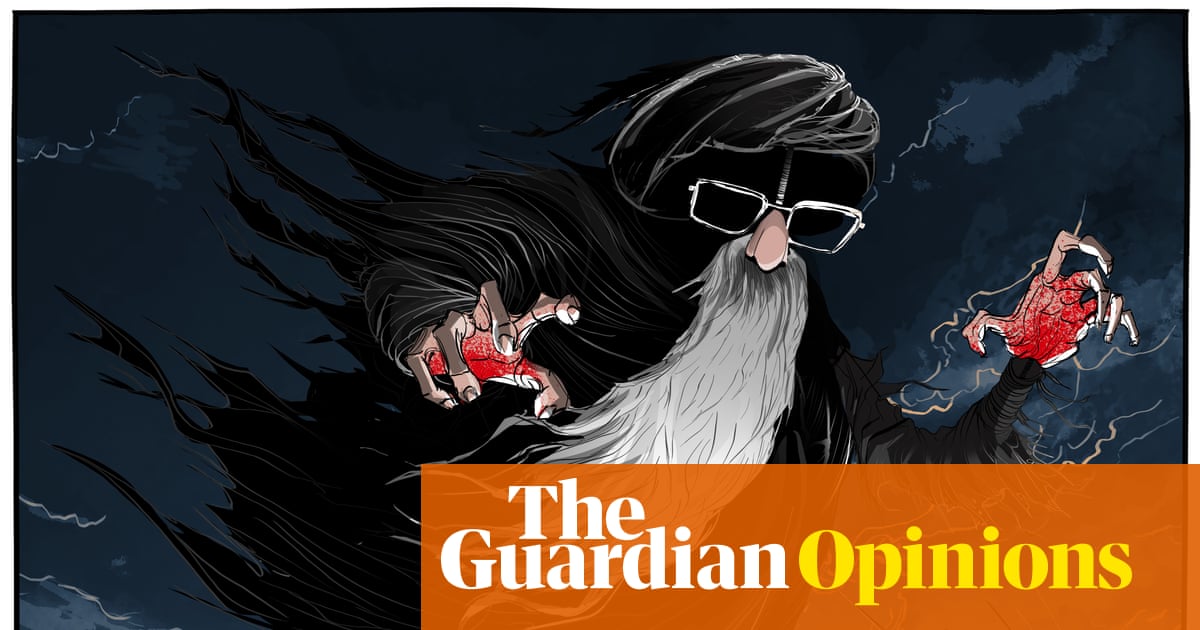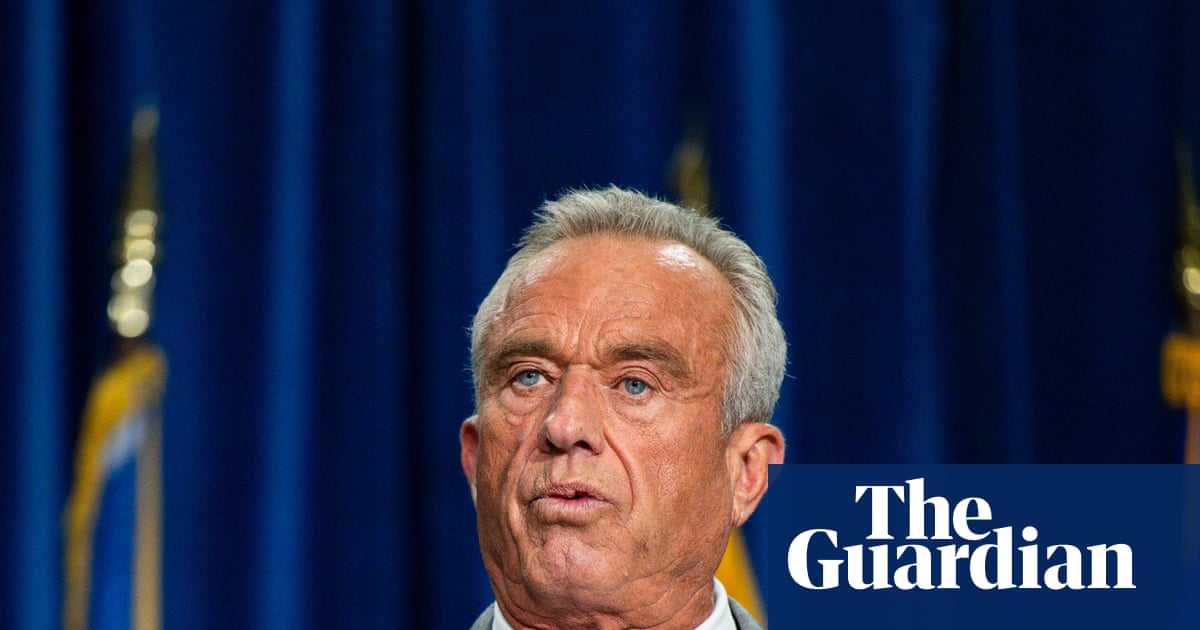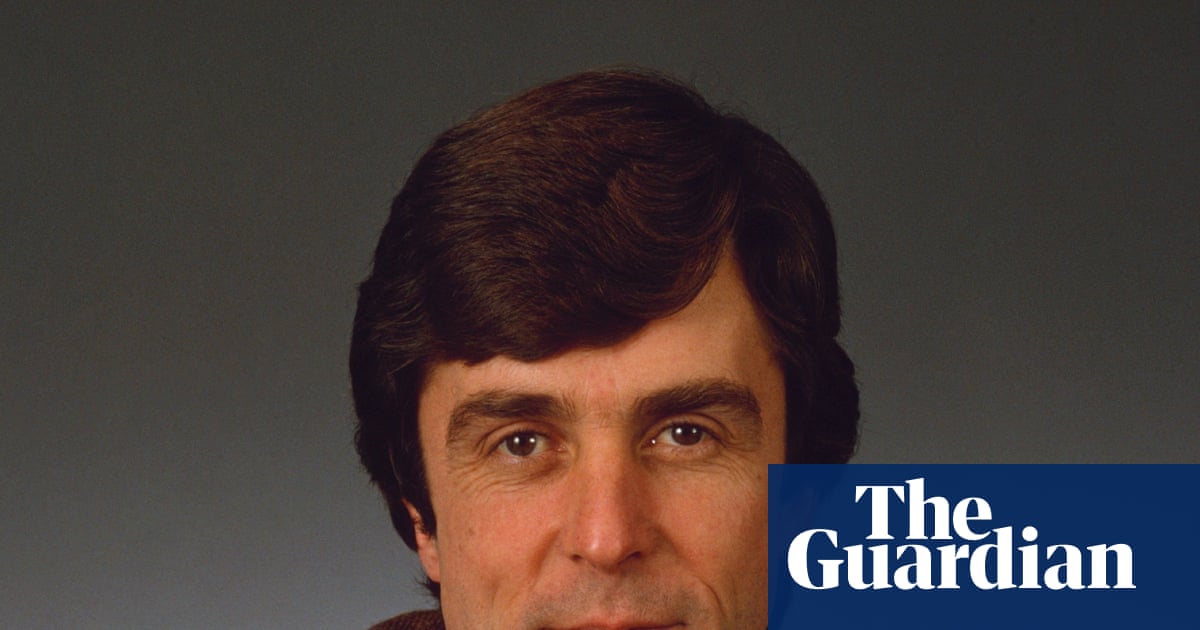Doctors and medical staff at the largest big hospital still functioning in Gaza say they will be overwhelmed by a wave of new wounded and sick patients if hundreds of thousands of Palestinians flee the north of the devastated territory in the face of an intensifying Israeli offensive.
Dr Mohammed Saqr, director of nursing at the Nasser medical complex near Khan Younis, in the south of Gaza, said there were not enough staff to cope with even existing demand and that supplies of medicine and fuel were running low.
“We have been working for more than 23 months in an emergency situation so we are all exhausted,” Saqr said in a voice note sent from the complex on Friday. “Some of us are still in Israeli jails and others were killed inside the hospital and outside and others had to leave [the] Gaza Strip to escape death, so our numbers are not like before the war.”
There appears little chance of any new ceasefire after Israel’s strike on Qatar last week. The attack targeted the leadership of Hamas, who were meeting in the Gulf state to consider new terms for a deal set out by Donald Trump.
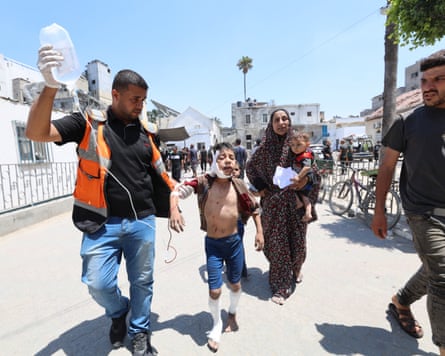
Health authorities in Gaza announced last week they would not evacuate Gaza City’s two main operational hospitals, al-Shifa and al-Ahli, and that doctors would not leave patients unattended.
The UN’s World Health Organization pledged its workers would remain in Gaza City despite calls from Israel’s military for the estimated 1 million people living and sheltering there to evacuate before a new offensive.
But doctors at al-Ahli, which has been under evacuation orders for weeks, described a “situation beyond any human mind can imagine or can conceive” and said they might be forced to comply with the Israeli evacuation orders.
“You see towers 20 storeys high collapse in less than two seconds [when hit by an Israeli airstrike], you see thousands of families running for their lives in the streets with their kids, you see the kids being slaughtered, you see limbs being mutilated,” said Dr Khamis Elessi, a consultant pain specialist at the hospital.
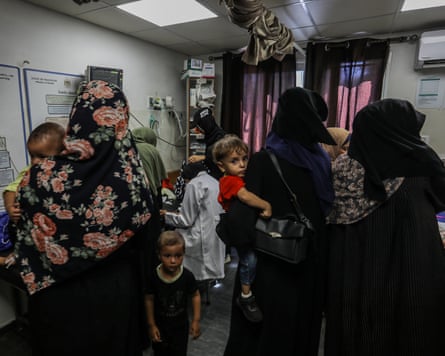
There are now three times more patients than beds at al-Ahli which has received as many as 400 cases on some days in the past month. The facility has only three ICU beds, and many casualties with serious injuries, including broken limbs, have been sent home to wait for surgery.
“I hope, I hope we will survive,” said Khamis.
At al-Shifa hospital, once the biggest health facility in Gaza City but now barely functioning, doctors also said they would stay. “I will go to the south with my family and make sure they are safe and then I will return to Gaza to continue working at al-Shifa hospital, God willing,” said one.
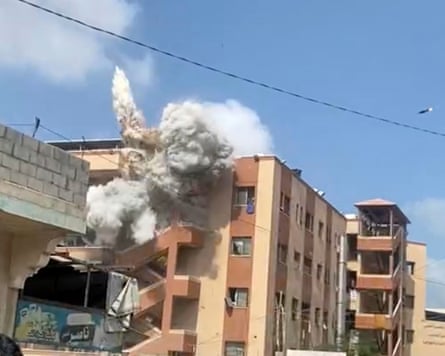
Medics at Nasser described a daily routine of dealing with death and severe injuries inflicted by bomb blasts and bullets.
“We are dealing with a lot of blast injuries, shrapnel and bullet wounds … If this was in the US it would be a huge mass casualty incident every day. For me, it is absolutely overwhelming but I’m told these are good days compared with last month,” said Dr Tipu Khan, from Ventura, California, who arrived at the hospital 10 days ago as a volunteer with MedGlobal.
Many casualties are young men and children, often teenagers, injured close to aid distribution hubs that are run by the US-and Israel-backed Gaza Humanitarian Foundation and protected by Israeli troops, Khan said.
“Every morning like clockwork, we get seven, eight, 10 young adolescent males with blast or gunshot wounds. Some come in with a retained bullet in the brain or chest. These are devastating injuries and three or four are either actively dying or not saveable,” Khan said.
The Israeli military has denied firing deliberately on civilians seeking aid from the GHF sites and says it takes all feasible precautions to prevent civilian casualties in Gaza.

Khan said that some basic supplies were running short at Nasser, such as equipment for blood pressure readings and anaesthetics.
The hospital, where an Israeli strike killed 20 people including journalists and health workers last month, is turning off electricity on certain days in some departments and corridors to conserve limited stocks of fuel for generators, officials there said.
Saqr said he feared the sprawling facility, which provides more than half the total hospital beds in Gaza, might be forced to shut down if the Israeli military operations expand further.
“Evacuating Nasser complex means that thousands of patients will inevitably die because there are no other places to go. Other hospital and fields clinics in the south of Gaza are not equipped to deal with 1,000 admitted cases. If we are ordered to evacuate a lot of patients would inevitably die,” he said.

Tedros Adhanom Ghebreyesus, director-general of the World Health Organization, said last week that what Israel has designated as a “humanitarian zone” in the south of the Gaza Strip has “neither the size nor scale of services to support those already there, let alone new arrivals”.
Israeli officials’ claims that they are working to increase health service provision in the south of Gaza have been met with scepticism by experts and aid workers.
The war started after a Hamas attack on Israel in October 2023 that killed 1,200 people, mostly civilians, and led to 250 being abducted. Fifty hostages remain in Gaza. The Israeli offensive that followed has killed more than 64,000, mostly civilians, and injured more than 160,000.
Khan said he had seen the devastation in Haiti after the earthquake there in 2010, but that Gaza was different. “Haiti was a natural disaster but the hardest thing here is that it is 100% preventable,” he said.

 3 months ago
65
3 months ago
65








